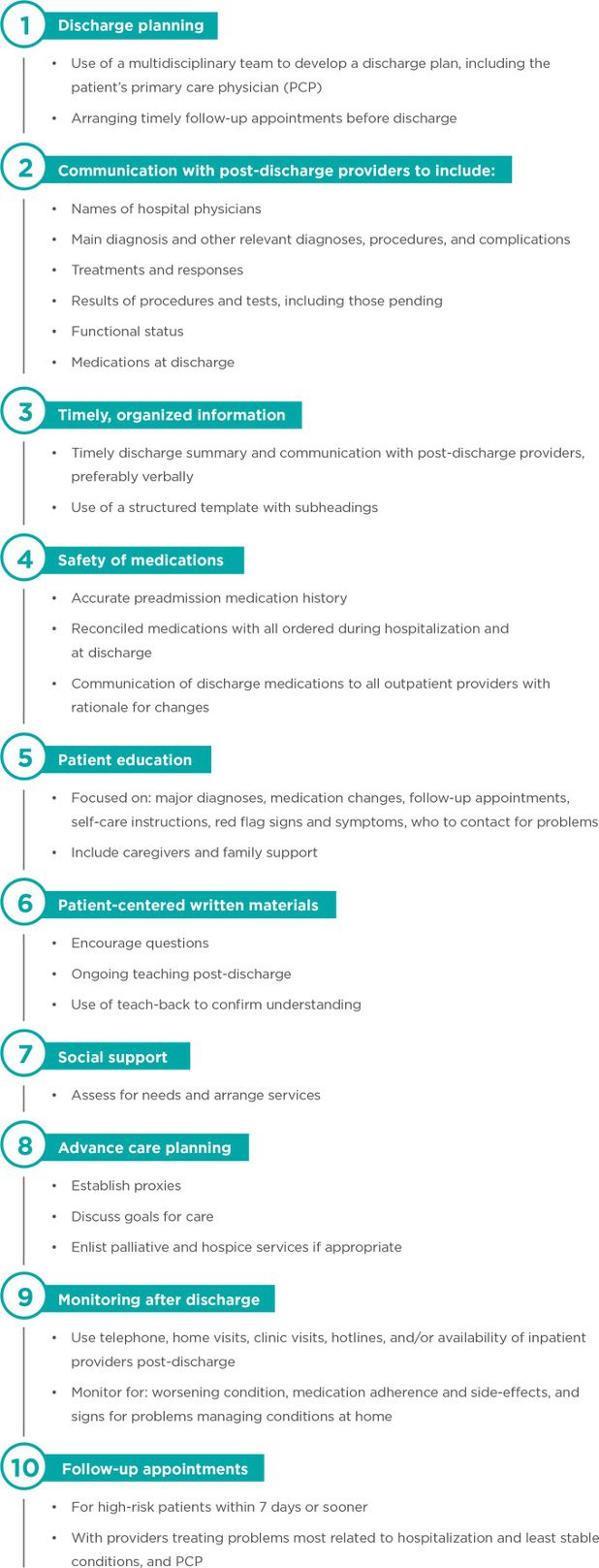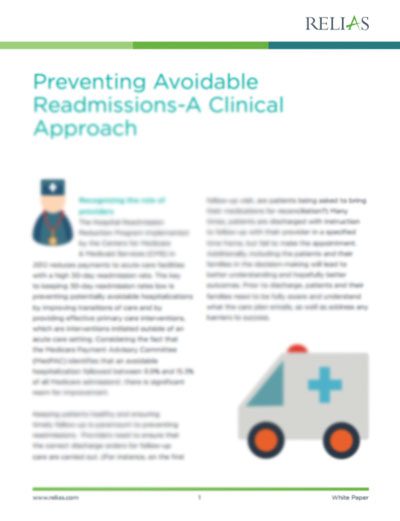Actually, they’re a REALLY big deal.
Some impactful statistics surrounding readmissions:
- About 1 in 5 Medicare patients is readmitted within 30 days of discharge from a hospital
- Unplanned readmissions cost Medicare $17.4 billion per year
- Up to 20% of patients discharged from an acute care hospital suffers an adverse event within 3 weeks, 75% of which are considered potentially preventable
- Potentially 27% of all readmissions are potentially preventable, and up to 50% of those are linked to interventions that could have been provided during initial hospitalization
What current measures are in place to reduce readmissions?
Under the Affordable Care Act (ACA), the Hospital Readmissions Reduction Program (HRRP) applies penalties to hospitals with above average readmission rates for select conditions. For FY2017, fines totaling approximately $528 million are being levied to 79% of hospitals under the program (Boccuti & Casillas, 2017).
Other initiatives under the ACA, such as Accountable Care Organizations, bundled-payment initiatives, and medical home programs, include provider incentives to lower hospital readmission rates. In addition, CMS has started allowing physicians to bill Medicare for transitional care management after a beneficiary’s discharge from a hospital or other type of healthcare facility.
Chances are, if you work in a role even remotely related to healthcare, efforts to reduce hospital readmissions have impacted your job, and for many it is a central focus. With so much at stake, healthcare providers, professionals, policymakers, and payers are fervently seeking sustainable solutions. An extensive range of strategies have been studied and recommended to reduce readmissions and a wide spectrum of single and multi-component interventions have been implemented across the continuum of care. However, questions still loom as to the most effective and efficient use of resources for improvement.
Framework of Care Transition Created from National Study
Furthermore. in 2015, a national study was conducted to identify strategies hospitals were using and which ones had the greatest impact on desired outcomes. Over 400 hospitals participating in 1 or more federal transitional care strategies completed a survey on their initiatives. The study revealed 302 unique combinations in practice (Mays, Strombert, Guo, & Williams, 2016). Hansen and colleagues (2011) conducted a review of 43 interventions to reduce readmissions finding “no consistent evidence from randomized controlled trials that any one intervention by itself significantly reduced hospital readmissions.”
Based on supporting evidence, Burke and colleagues (2013) developed a framework of care transition intervention domains that span inpatient and outpatient settings, called the Ideal Transition in Care. It describes 10 “ideal” components that fall along a spectrum from discharge planning to outpatient follow-up depicted as a bridge patients cross from one care environment to another saying, “it implies that the more components are missing, the less safe the ‘bridge’ or transition is.”
A review of 61 interventions, including singular and bundled multi-component interventions, were mapped to the Ideal Transition in Care framework. The average number of domains included in interventions was found to be 3.5 with 47.5% demonstrating reductions in readmissions. Consistent with other studies, no singular intervention improved readmissions. In fact, the only significant predictor of success was the number of domains included in an intervention. In other words, the more domains employed, the greater the likelihood of reducing rates of readmissions.
Here is a brief description of the domains:

Summary
Taking the initiative begins with assessing your organization’s readmission reduction strategies. Using the Ideal Transition in Care framework (or a similar model spanning a patient’s care continuum from hospitalization through follow-up may) provide valuable insight into gaps preventing optimal outcomes.
Here are some questions to start your assessment!
- What other organizations and providers do you need to work with for a safer and more seamless transition process?
- Of those, which ones would benefit most from improvements in readmissions and other related measures, thus having greatest incentive?
- What patient populations are at greatest risk for your organization?
- Where are your strengths?
- What domains might be over-resourced and if reduced provide means to implement strategies across other components?
- What domains are weakest?
- What patient populations do you serve for whom additional resources in those areas would benefit most if bolstered?
- How can you risk stratify to provide support where needed most?
- What interventions are you currently pursing for other quality measures that might provide opportunities to also improve care transitions and readmissions?
- Are staff informed of your organization’s performance and the importance of their roles in reducing readmissions?

Reducing Avoidable Hospital Readmissions
Acute organizations can play their role in reducing readmissions by remembering two key concepts—prevention and patient education. Download this white paper today to learn how to prevent and implement interventions for the conditions that contribute to avoidable hospitalizations including:
Download the White Paper →





